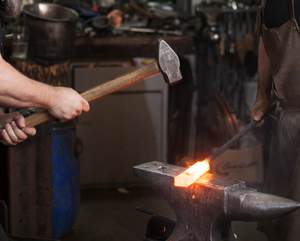Enjoy this letter? Get next Sunday's sent straight to your inbox.

 Ink and Feet
Ink and Feet


One of the things you'll notice quickly when you hear to one-on-one conversations in Japanese is that the listener isn't still - or quiet.
You'll hear a steady stream of hai, hai (yes, yes), or so, so, so (right, right), or so, des ka (is that so?) and an absolute ton of non-voiced "mmn"s.
It has a pattern, a rhythm - and a name.
Aizuchi.
Literally translated, it means "mutual hammering", and it comes by way of metaphor from blacksmithing, centuries past.
When working carbon steel in the Japanese technique, (or mochi, come to think of it) two people hammer in an alternating rhythm. Fast, decisive movements, precisely timed - or someone loses a finger.
But underneath all that frenetic movement is the slow and steady sculpting of something truly great - and that could only come into existence because of two people working together.
Just like a conversation.
Here, a listener is asked to be an active participant - continually affirming that they understand, pausing, asking questions when they're confused or not sure.
It's different than interrupting, or trying to wrest control of the narrative. The speaker very much has the floor - and not one of those "yes" or "right"s mean "I agree". But the listener is engaged, understanding, and showing it.
In English, we have a phrase - "active listening" - that's been used so much in the past decade that it's getting a bit flimsy and floppy these days. But here, watching Aizuchi in action, it strikes me that maybe active listening could stand to be a bit more active. :)
Have an engaged week,
-Steven
p.s. The best thing I read all week was this thought-provoking essay on AI, empathy, fiction, and what it means to be human.
Photo credit: NAIT on Flickr
Enjoy this letter? Get next Sunday's sent straight to your inbox.
